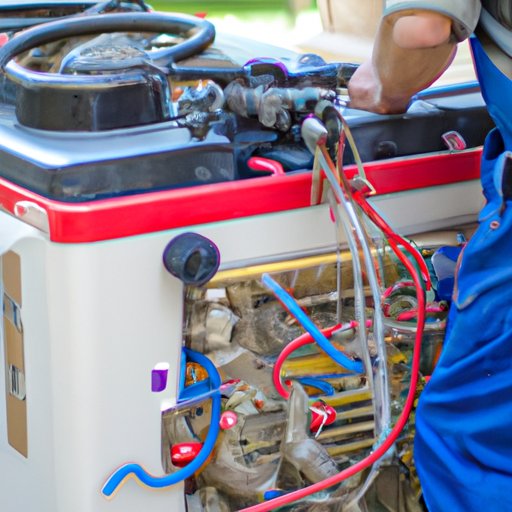Overview of Heat Pump Technology
Heat pumps are a type of HVAC (heating, ventilation, and air conditioning) system that utilizes electricity to move heat from one area to another. They are increasingly popular in both residential and commercial applications due to their energy efficiency and versatility. In this article, we will explore the basics of heat pump technology, explain how they work, discuss the advantages and disadvantages, and provide some maintenance tips.
Definition of Heat Pump
A heat pump is a device that transfers thermal energy from one place to another using refrigerant gas. It operates by compressing the refrigerant gas to raise its temperature, then releasing it through an expansion valve. This process creates a cycle of heat transfer from one area to another, allowing the heat pump to cool or heat a space depending on the mode.
Types of Heat Pumps
There are three main types of heat pumps: air source, geothermal, and water source. Air source heat pumps extract heat from the outdoor air, while geothermal and water source heat pumps draw heat from the ground or a body of water respectively. Each type has its own advantages and disadvantages, so it’s important to consider your climate and home layout before deciding which type is best for your needs.

Explaining the Components of a Heat Pump System
Heat pumps are made up of several components, including a compressor, expansion valve, evaporator coil, condenser coil, fan, and refrigerant. The compressor compresses the refrigerant gas, raising its temperature. The expansion valve then releases the compressed gas, lowering its temperature. The evaporator coil absorbs heat from the surrounding air, while the condenser coil releases heat into the air. The fan circulates the air over the coils, allowing the heat transfer process to take place. Finally, the refrigerant acts as a medium for transferring heat.

Describing How a Heat Pump Works
Heat pumps use the same basic principles of heat transfer to cool and heat a space. In the heating mode, the compressor compresses the refrigerant gas, raising its temperature. The expanded gas then passes through the evaporator coil, where it absorbs heat from the surrounding air. The heated refrigerant then passes through the condenser coil, releasing the heat into the air inside the space. In the cooling mode, the process is reversed, with the compressor compressing the refrigerant gas to lower its temperature. The cooled gas then passes through the evaporator coil, where it absorbs heat from the air inside the space. The refrigerant then passes through the condenser coil, releasing the heat into the outside air.
Advantages and Disadvantages of Heat Pumps
Heat pumps offer several advantages, such as energy efficiency, cost savings, and environmental friendliness. They also have the ability to both heat and cool a space, making them a versatile option for homeowners. However, there are also some drawbacks to using a heat pump, such as higher upfront costs, noise pollution, and reduced efficiency in extreme temperatures.
Comparing Different Types of Heat Pumps
Air source heat pumps are the most common type and are often used for residential applications. They are relatively inexpensive to install and can be used in most climates. Geothermal heat pumps are more expensive to install but are extremely efficient and can be used in any climate. Water source heat pumps are typically used in commercial applications and require access to a nearby body of water.

Maintenance Tips for Heat Pumps
Heat pumps require regular maintenance to ensure they are running efficiently. Cleaning the coils, checking the refrigerant levels, inspecting wiring and connections, testing the thermostat, and replacing air filters are all important steps in maintaining a heat pump. Additionally, it’s a good idea to schedule annual service to inspect the system and make sure everything is working properly.
Conclusion
Heat pumps are an efficient and cost-effective way to heat and cool a space. They come in three main types: air source, geothermal, and water source. Understanding how a heat pump works and performing regular maintenance will help keep your system running smoothly for years to come.
(Note: Is this article not meeting your expectations? Do you have knowledge or insights to share? Unlock new opportunities and expand your reach by joining our authors team. Click Registration to join us and share your expertise with our readers.)
